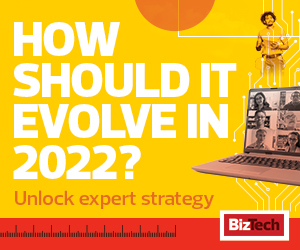Where Do OT and IT Overlap?
OT and IT have tended to occupy separate spheres of concern in the energy and utility industry. “IT tends to have global strategies and policies for things; OT forever has been localized,” says Miller. “They procure all their software locally and the workflows, processes and procedures have all been developed locally.”
Business leaders have an interest in understanding how to diagnose, maintain, track and optimize the physical industrial equipment that drives the business. This is why IoT devices, such as sensors, are being integrated into power plants, pipelines, wind turbines and more. The purpose isn’t just for IT to better understand and manage the data OT contends with every day but to do something with it.
For example, smart devices can monitor equipment for signs of disrepair, then trigger a service engineer visit. With artificial intelligence, those devices could also analyze enough data to begin to identify areas where OT systems could be improved or how a power grid might be better balanced.
“The goal is to reduce redundancies and errors and improve workflows and efficiencies,” says John Villali, a research director at IDC Energy Insights.
Infrastructure That Supports Both IT and OT
“Utilities are typically and historically known for being fairly siloed,” says Villali. Those silos need to vanish before infrastructure for IT/OT integration can be established.
MORE ENERGY AND UTILITIES: Explore the industry's tech trends to watch in 2022.
That should begin as an organizational undertaking. “Just saying to the CIO, ‘Make this problem go away’ isn't enough,” he says. “It actually tends to drive the good OT engineers away, because someone from IT walks in and says, ‘We’re going to do it this way.’ All the OT engineers say, ‘Oh no, we’re not.’ The differences in culture are very real,” says Miller.
To bridge the gap, Miller suggests identifying small projects that require both IT and OT involvement. “It becomes no longer, ‘IT does it all wrong, they do it differently, it doesn’t matter to me in OT.’ Instead, you start to understand and realize what some of the reasons for those differences are.”
Integration requires bringing technologies together too. Help can come from equipment makers, such as Schneider Electric and Honeywell, and enterprise software companies such as Microsoft and IBM. Even though the latter are on the IT side, Miller explains, “they have deep engagement into OT operations as well and can begin to build some of those bridges.”
Among the most effective bridges so far are cloud-based platforms that easily facilitate the viewing and use of IT/OT convergence.
“You can plug in different core utilities systems to provide a unified view,” says Villali. “It could just be different types of dashboards that you’re looking at. If you’re a plant operator, you may be looking at one dashboard showing you how your plant is performing. If you’re in the finance group or a COO, you may have a financial dashboard to see how profitable the units are that you’re operating,” says Villali.
What both scenarios share is that better data will yield greater insights, and therefore benefits, for E&U companies. “In the end, you’re hoping for a better return on investment, as well as asset performance with longer lifecycles for some of these assets that they’re trying to maintain.”











